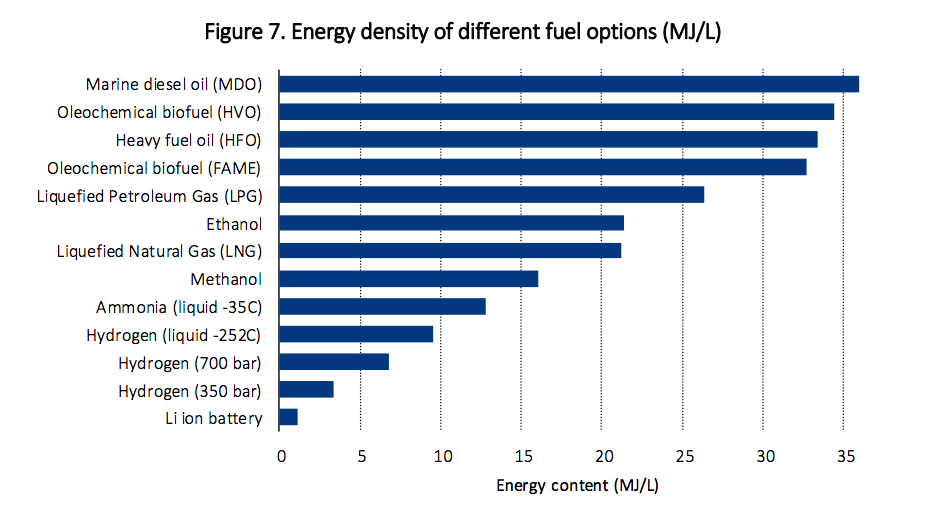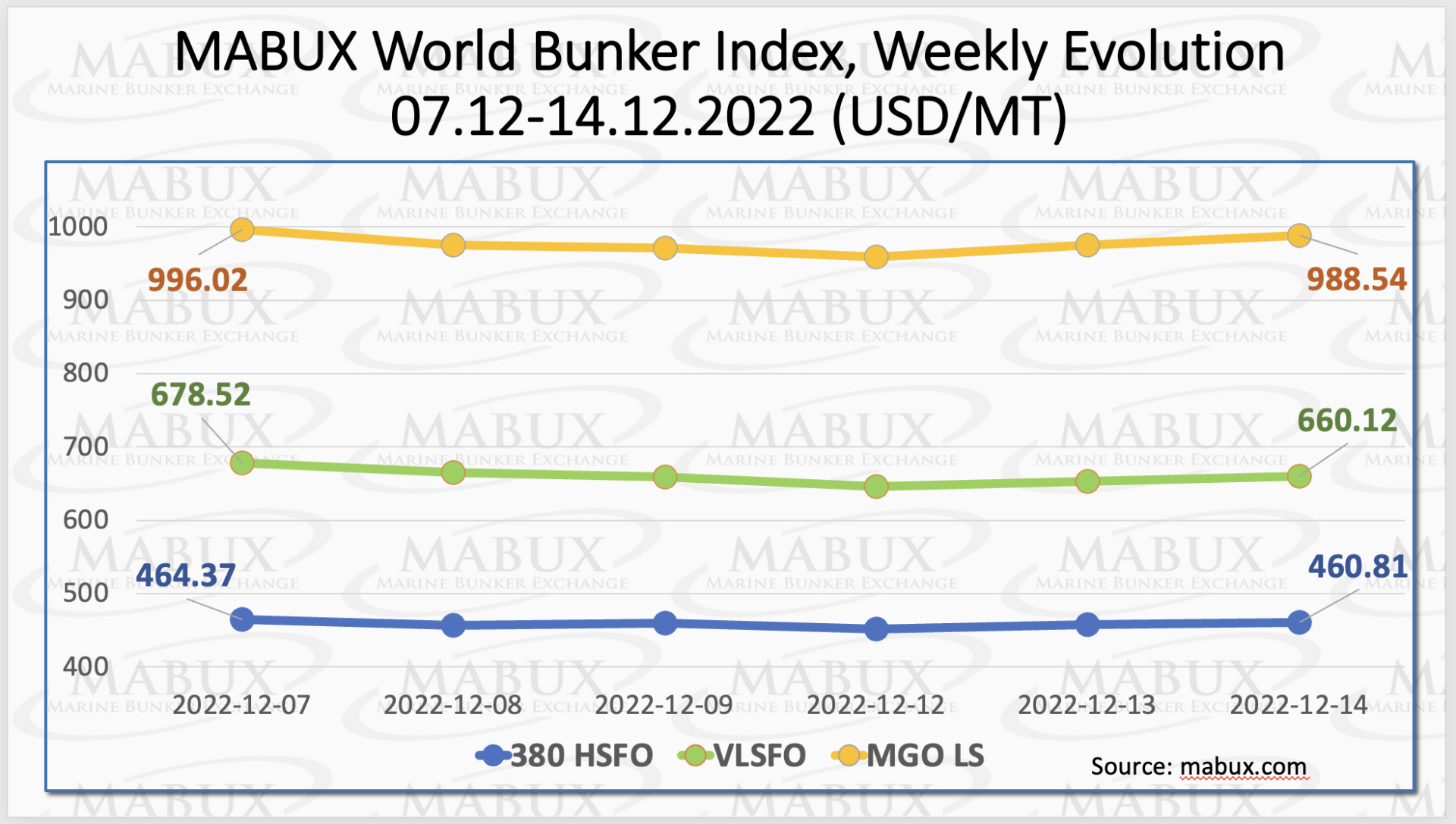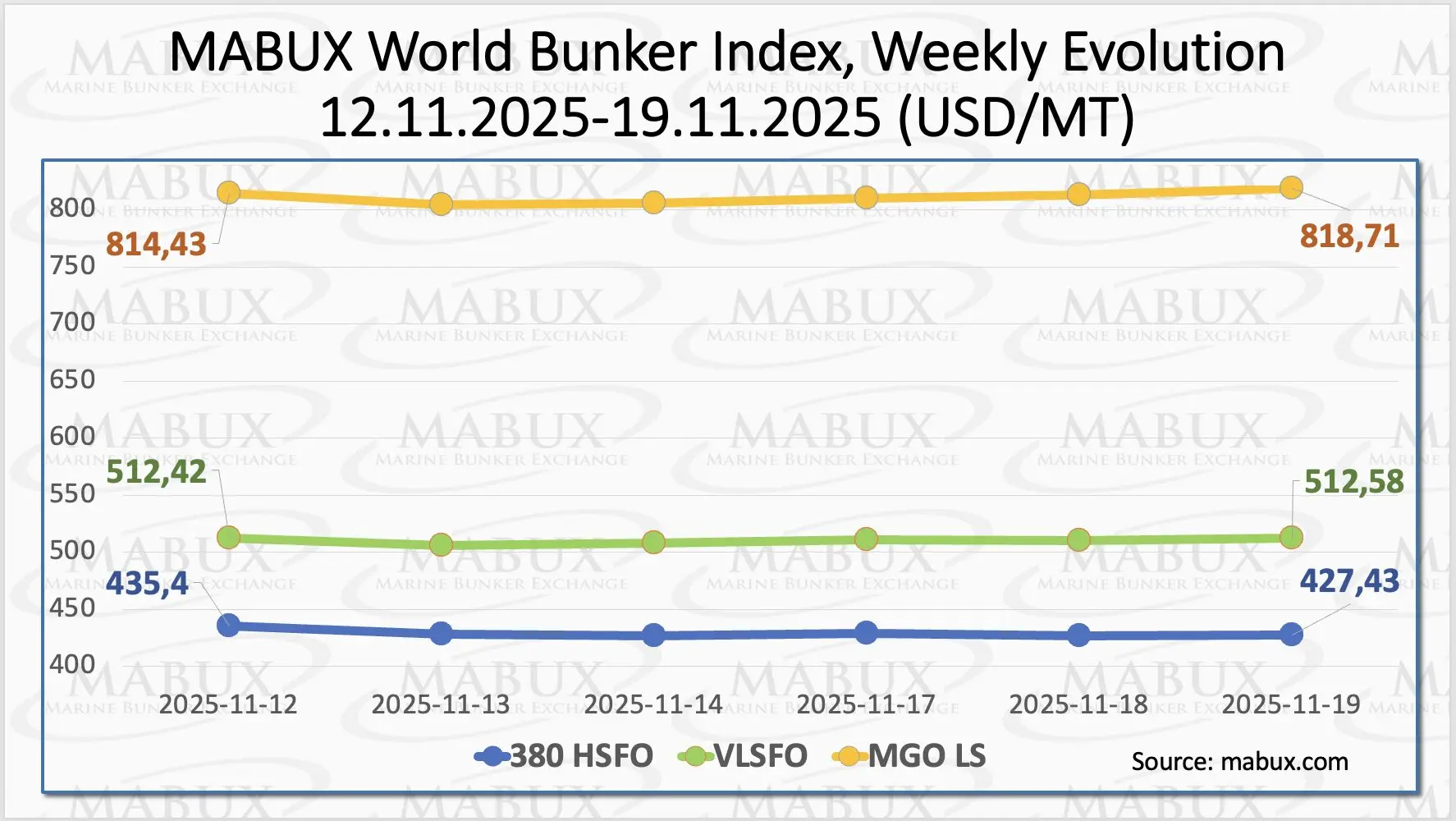

The number of sustainable fuel options for maritime transport can be narrowed down by firstly considering their energy density. The petroleum-based fuels that account for the majority of energy use in shipping today, have the advantage of having a high energy density, as 33 MJ of energy are released per litre of fuel burnt.
Almost all alternative fuels proposed to date that can reduce air pollutant and greenhouse gas
(GHG) emissions have a lower energy density. This will mean that larger fuel storage tanks are inevitable for large ships, which can either lead to lower space for cargo or range limitations for different fuels.
The energy storage solution with the lowest energy density is lithium ion (Li-ion) batteries in electric ships, which are two orders of magnitude less energy dense than HFO, even accounting for the better efficiency of electric motors with respect to combustion engines. This low energy density restricts ships running purely on electricity to short routes (<200 km). Whilst numerous, these account for only a small fraction of global maritime GHG emissions.
Compressed hydrogen is likely to face similar restrictions, as its energy density is between 3.3-6.8 MJ/L, depending on the storage pressure. Conversely, a recent assessment focused on ships using liquid hydrogen, which has an energy density of 8.5 MJ/L, showed that they could feasibly cover the majority of journeys across the Pacific, while certain routes would require alterations (Mao et al., 2020).
As other alternative shipping fuels have an even higher energy densities, it is unlikely that they will face fundamental physical limitations to trip distances, though route alterations and intermediate refuelling may be required for some fuel options.
Source: OECD / ITF, extract from the report “Navigating Towards Cleaner Maritime Shipping”













